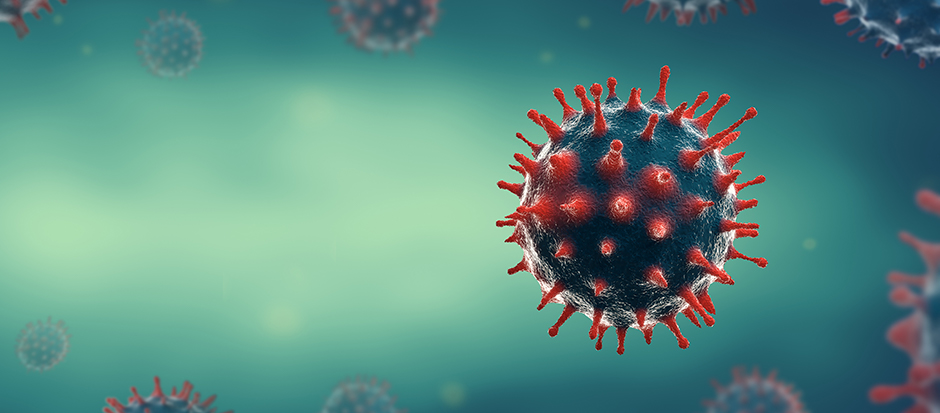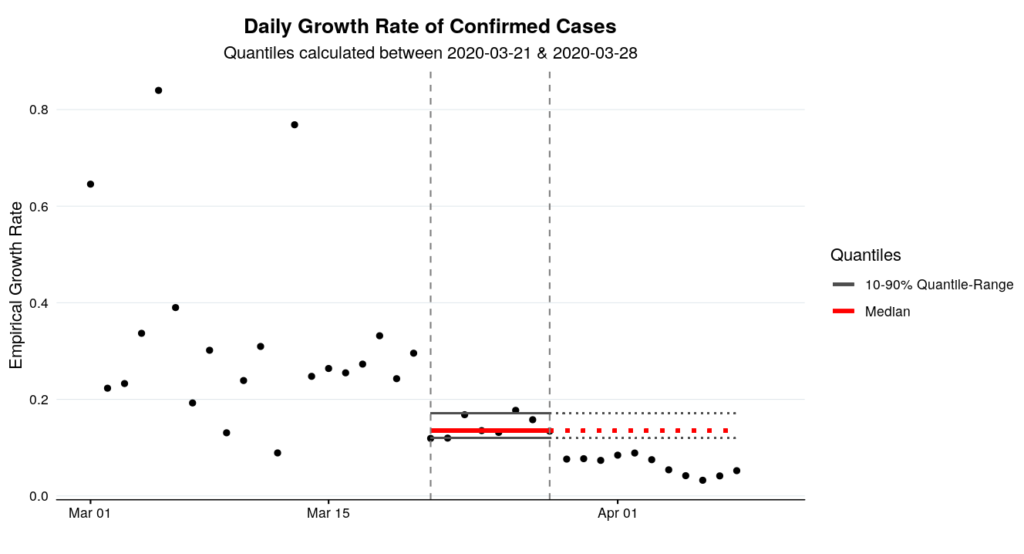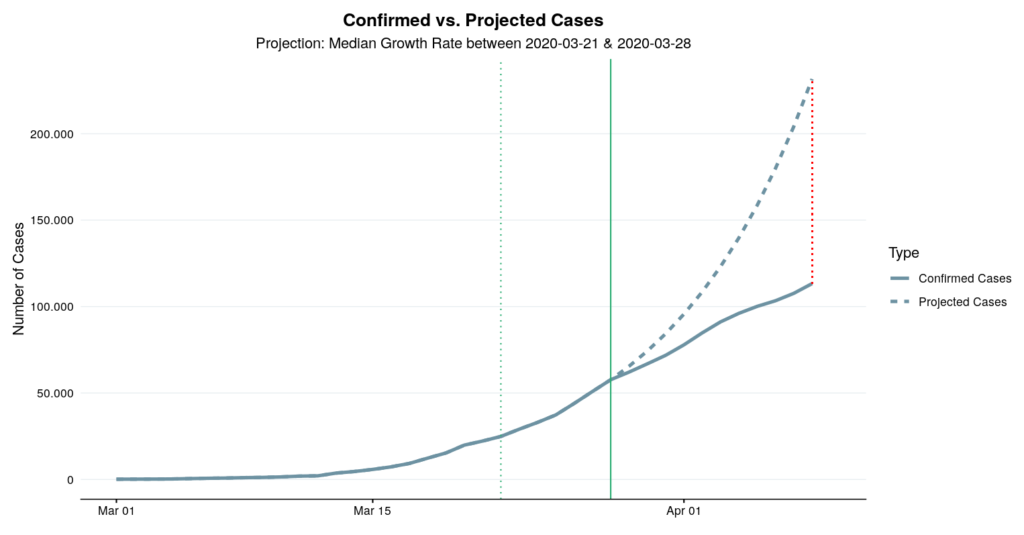UPDATE CORONA-SHUTDOWN: WHAT EFFECT DO CURFEW AND CONTACT BAN HAVE?
In our first presentation on the Flatten the Curve Effect, we used an event study to show that the restrictive measures such as the closure of day-care centres and schools as well as accompanying measures such as the increased home office activities of many companies had an effect. This time, we will look at the question of what additional effect the curfews and contact bans have had in containing the Covid-19 epidemic.
ADAPTED EVENT STUDY
The basic idea of the event study is similar to the last observation. This time, however, we compare the development of the actually observed number of infected persons (= officially confirmed cases) with the expected curve of infected persons without additional initial and contact restrictions. We model the latter by using the observed daily growth rates of infected persons in the period after the first restrictions (see below). The difference between the two curves at a given time then describes the additional impact of curfews and contact restrictions.
The growth rates for Germany in the period from 21.03. to 28.03.2020 are structurally lower than the growth observed previously (without restrictions). This period forms the basis for the modelled curve.
RESULTS
In the curve of infected people we see another bend 6 days after the introduction of contact and curfew. Our analysis shows that these movement restrictions had a strong additional effect. As of 08.04. there were a total of 113,296 confirmed Covid-19 cases. Without the additional restrictions, however, more than 230,000 cases would have been expected. This means that the first measures would not have been sufficient to contain the spread equally.



